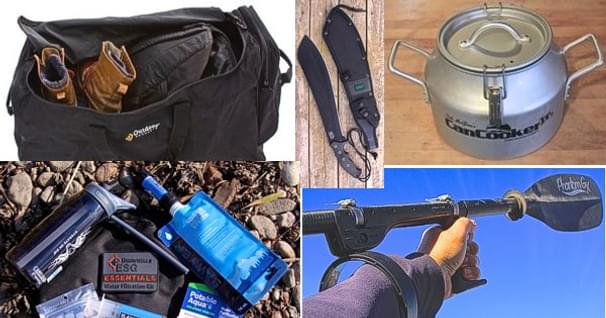Staying Put: Keeping Your Kayak Still
There you are, right where you want to be, within perfect casting distance of that honey hole. But the wind turns you around, or the current grabs you. Your window of opportunity just slammed shut. But that doesn't have to be the case. There are a number of positioning aids available to the kayak angler.
ANCHORS AWAY: The standard method of making a floating vessel stay in one place (aside from a sandbar) is an anchor. This is true in the case of a kayak as well. The same principles that apply to larger motorized vessels apply here as well, just on a smaller scale. Remember, weight isn't the determining factor on an anchor, size is.
TYPES OF ANCHORS and SCOPE: Many people will use anything heavy to serve as a kayak anchor, only to have it scoot across the bottom in adverse conditions. This can be dangerous, not to mention the damage it does to the bottom. The most common anchor used in the kayak fishing community is either a 1.5 lb or 3.0 lb folding anchor.
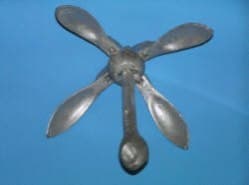
This device is amazingly effective. It works by simply lying on its side and grabbing the bottom. Here's where "scope" is important. Scope is nothing more than the ratio of the water's depth to the amount of line that is paid out from the vessel to the anchor. Some sources state that 7:1 yields the magic number. So, if the water is 10 feet deep you'll need 70 feet of line. That may be overkill for a kayak, but in order for this type of anchor to be effective, there will need to be sufficient rode in order for the anchor to get on its side and dig in. You can cheat a little by putting a couple feet of chain directly at the anchor, and then tie your nylon rope to that. The added weight helps keep the flukes of anchor stuck in the bottom. When this type of anchor is pulled to the surface it spins in the water, which slings off most of whatever it was hooked to on the bottom. If I'm going to be in significant current, I'll use a 3.0 lb anchor with plenty of rode. For typical fishing on the flats, the 1.5 lb model serves me well.
50 years of lightweight, maneuverable, high-performing kayaks.
Check out this interview with Tom Keane, Eddyline Kayaks Co-Owner, on their journey!
BOW / STERN / SIDE: Avoid the side whenever possible, especially if you're in any significant current. Your kayak is designed to properly handle water as it travels the length of the vessel, but not from the side. Bow and stern are the obvious best choices, and each has its benefits and disadvantages. Anchor from the bow and you'll be casting up current. This makes for a very natural presentation but you also have to be wary of the anchor line in front of you. If you deploy from the stern the anchor line isn't an issue any longer, but you soon find your bait is directly in front of you, placed there by the current. This is a great way to fish if you're using baits on the bottom. Should you hook up, you'll see that your kayak will actually move as the fish moves. Scotty (the same folks that make those rod holders I like so much) now makes a releasing anchor cleat that you can install anywhere you have enough plastic to accommodate the base.
THE ANCHOR TROLLEY: But let's say you want to switch from bow to stern without getting out of the kayak. The solution is an ingenious device called an anchor trolley. Basically, this is an apparatus that runs the length of your kayak on one side. You run your anchor line through a ring in the rigging, and this will allow you to move the ring via the rigging to change the placement of your anchor. It will look something like this.
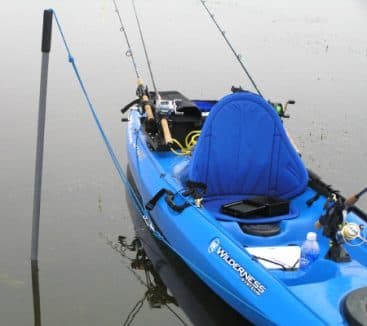
THE STAKE OUT POLE:
Now you're saying, "that's the funniest looking anchor I've ever seen". Nope, that thing hooked to the anchor trolley is a stake out pole. This ingenious device simply sticks in to the bottom and holds you in place. It can also be used through the scupper holes in your kayak. Another alternative to this handsome manufactured stake out pole is one fashioned from PVC. A trip to any home improvement store will allow you to build a pair of these for under $10. All you need is some ½" sch40 PVC and you're in business.
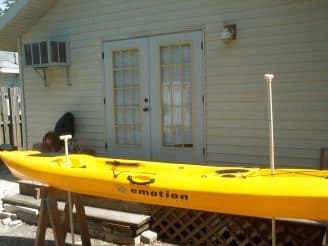
I've heard some folks use old golf clubs and even broken rods. The advantage of using a stake out pole is convenience. You can easily stake out in a matter of seconds where it would take a few minutes to deploy an anchor. The obvious disadvantage is that it only works in relatively shallow water. A trick I like to use on Florida flats is to put my stake out pole through one of my scuppers and drift. Once I stop, I know I'm on the edge of a drop off, and fish should be there.
DRIFT CHUTES:
This is a slick idea too. If you don't want to stop completely, but you want to merely slow down, you need a drift chute. Once deployed this device catches water, which slows you down. This is also effective if you're battling a large fish and need to apply some additional pressure. No respected tarpon angler will launch without one.
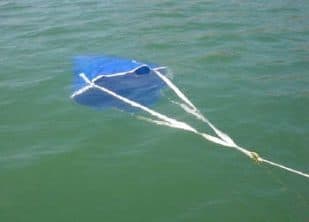
Once you're ready to go again, you simply pull it in and pick it up from the back. The water runs out, and you toss it in your tank well. The one shown is a 30" model, perfect for a kayak. It also makes a unique party hat for later that evening, or so I've been told.
WALKING THE DOG, SORTA: Most kayak anglers will use some sort of nylon rope with their anchors. However, some friends of mine recently shared a great idea with me. They use a retractable dog leash instead. Brilliant.
SAFETY: Finally, an anchor can be priceless if you find yourself in place "A", and despite your best efforts you're drifting toward place "B", and you really don't want to go to place "B". Place "B could be a busy boating channel, a water fall, etc. Like any safety equipment, the best time to learn to use it properly is long BEFORE you actually need it.
See you out on the water ...
Related Articles
Learn how to make a pivoting rod holder that will keep your rods out of the way when you don't need them…
Each year the outdoor industry pulls back the curtain to showcase more and more "stuff" for us to drool…
Wisdom can sometimes be found in some of the strangest places. Recently we made a trip to Key West for a…



